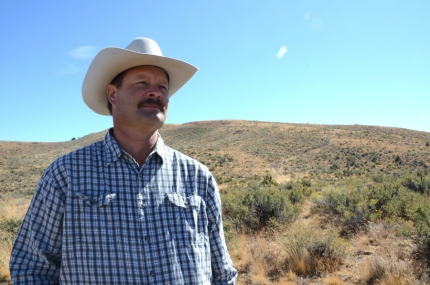Related Rural Blog Posts
Fruitful Under the Sun
Posted by on March 29, 2012 at 12:15 PM EDT
Doctors, teachers, lawyers, priests, like many other professionals, set about on course of academic preparation for their lifetime careers. For me as a wife and mother, I worked to help put my husband through college, with second consideration for my academic course of study in accounting. It was through my fortuitous meeting with the then President of the Board of Directors of Tierra del Sol Housing Corporation who encouraged me to come to work at Tierra del Sol that I started on my profession as Executive Director of a then local nonprofit organization, which provided housing opportunities on an otherwise disenfranchised and yet critically important sector to our local agricultural community, the farmworkers and the working poor.
There was no real academic course of study to prepare me for the many challenges and problems that I would encounter during the past 31 years. It was in the trenches that I learned the lessons of community work and with it gained the tenacity and passion for my work. Decades later, in reflecting my experiences, I chuckle when I think about coming from an office setting to trudging through the desert sands of construction sites in my Italian shoes. I was a female working in a male dominated construction field and I too had the additional challenge of proving myself in that environment. It’s been a good race and it is an honor to be recognized as a “Champion of Change” by the White House. I am truly honored and humbled by this award. It has been my privilege to have found my passion and to serve the people of New Mexico. I have also been blessed to have the support of so many dedicated leaders from our local communities who recognize the economic and social needs of people in rural areas of our states along the international border corridor between the United States and Mexico. My success is beholding to the people who have come to belief that collectively, we can effect change and can bring significant improvements to the lives of our clients.
Collective Minds, Hearts and Hands Working for Change
Posted by on March 29, 2012 at 12:13 PM EDT
I am honored to be named a "Champion of Change," particularly during the week that lifts up individuals who honor Cesar Chavez’s core values of service, knowledge, innovation, acceptance of all people, and respect for life and the environment. I first learned of Cesar Chavez and the farmworker movement the year that Chavez died. During that spring of 1993, I was studying theology at Duke Divinity School and looking for a summer internship. I found that my previous internships working primarily with homeless women in MS, MO, DE, and NC proved critical to my understanding of the root causes of poverty, my ability to build relationships directly with homeless individuals, and my interest in working for social and economic justice.
I learned about the work and ideals of Cesar Chavez that summer during an internship with Student Action with Farmworkers (SAF), but I also learned a lot more. I learned about my own white, working class community in the Mississippi Delta, about my dad’s experiences sharecropping in the Delta, as well as about how my grandparents had been able to purchase the land I grew up on through a New Deal program that allowed sharecroppers to become farm owners.
One of the roles that Student Action with Farmworkers plays is supporting young people to explore their own family and community’s history, as well as to learn alternative views and stories of history—primarily told by those that are marginalized in our communities. For SAF this means sharing with young people the history of agriculture in the US, how this history connects to larger issues of class, race, and globalization, and the stories of those most oppressed in the agricultural system—farmworkers.
Delivering on A Promise of Justice
Posted by on March 29, 2012 at 12:07 PM EDT
On behalf of the entire team of the Migrant Farmworker Justice Project of Florida Legal Services, I am deeply honored to be selected to receive the White House Champions of Change Award.
Over thirty-five years ago as a law student at Harvard Law School, I, like so many others, was inspired by the example of Cesar Chavez to pursue a career as a farm worker legal services lawyer. Over the years, I have been privileged to work with many fine attorneys and support staff who heeded the same call. In isolated rural communities across this nation, these often unsung “champions of change” have fought for the rights of the most vulnerable workers in our society.
Today as in the past, the majority of farm workers in the United States live in poverty, endure poor working conditions and receive little or no government assistance. At least 50% and probably closer to 2/3 of the farm workers are not legally present in the United States and do not have work authorization. These conditions lead to an unstable labor market which requires constant replenishment with new workers from abroad. Real change requires diverting the costs of instability from the farm workers back to the employers, taxpayers, and consumers who benefit from their work.
Creating a Better Future for Farmworkers
Posted by on March 29, 2012 at 12:05 PM EDT
I am honored to accept this award on behalf of the many farmworkers who opened their homes to me and my students to share food, music, laughter, personal accounts of their successes and challenges, and their ideas about how to construct a better future for themselves. I’d also like to recognize the deep engagement of students, and the consistent guidance and support of colleagues, family and friends who were integral in making this work possible.
My earliest understanding of farm work started in my childhood when my grandparents, parents, siblings, and I worked in our family vineyard in rural upstate New York. It was here that I first encountered the farmworkers who came in the season to help harvest fruits and vegetables. I gained a more nuanced understanding of the unique contributions farmworkers make to agriculture and communities when I participated in the Farmworker Women’s Equity Project, a nationwide research project that engaged both male and female farmworkers in discussions about opportunities for women in farmwork. Whether in New York, Florida or North Carolina, the farmworkers I met shared a common vision that women farmworkers deserve better lives for themselves and their families.
Some years later, I had the great fortune to interview Cesar Chavez about his life. He shared with me his personal stories about bringing together people of diverse backgrounds to work toward improving the lives of farmworkers. He explained his deep belief in the power of collective action to bring about positive change. His vision, humility, and collaborative approach to creating a more just society continue to inspire me today.
Conservation That Works
Posted by on March 23, 2012 at 6:26 PM EDTWorking with farmers, ranchers and forest landowners is critical to President Obama’s vision of an economy built to last, one where rural communities provide clean air, clean water and wildlife habitat to generate economic opportunities for outdoor recreation and jobs, while protecting farm and ranch traditions. Working Lands for Wildlife demonstrates the President’s focus on the rural economy and his commitment to keep working lands working.
Knowing I was speaking to an audience passionate about wildlife, I took a moment to revisit a time from 100 years ago when Theodore Roosevelt addressed a similar group, saying, "There can be no greater issue than that of conservation in this country." People of all political persuasions have found commonality around the fundamental principle of conservation—a principle that has always recognized the importance of wildlife.
Working Lands for Wildlife is a partnership between the Department of Agriculture’s Natural Resources Conservation Service (NRCS) and Department of Interior’s U.S. Fish and Wildlife Service to make measurable progress in wildlife conservation through focused community-driven, locally led efforts across America.
To engage private landowners, NRCS has committed $33 million to share in the cost of conservation practices benefiting the bog turtle, golden-winged warbler, gopher tortoise, greater sage-grouse, lesser prairie-chicken, New England cottontail and the Southwestern willow flycatcher. The U.S. Fish and Wildlife Service will work to provide landowners with regulatory certainty and tools to assist them in making long-term business decisions.
This collaborative approach builds on the success we are realizing in the Western U.S. with NRCS’s Sage-Grouse Initiative (SGI), where ranchers are projected to have increased sage grouse populations by 8 to 10 percent through wildlife habitat conservation practices such as prescribed grazing, brush management and fence flagging.
Through SGI, on the Bedortha Ranch in central Oregon, intensive efforts to boost sage grouse habitat are underway. As part of that effort, crews have cut and flattened invasive juniper trees. These trees have expanded beyond their historic locations into sagebrush terrain throughout the West, out-competing other valuable shrubs and plants that provide habitat for the ground-dwelling sage-grouse.
As the junipers increased on his ranch, Gary Bedortha watched the sage-grouse population decline. “When I was a kid growing up in this country, I knew some of these draws had an excess of 100 sage grouse—you would ride through the draws and the whole ground would move in front of you. At that time, we didn’t have the juniper like we do now,” Bedortha said.
This ranch is only one example of the success we can accomplish on private lands. Bedortha used the information and financial assistance he received from NRCS to remove nearly 7,000 acres of invading juniper in less than three years. We know taking a focused approach to wildlife conservation maximizes the public’s investment and return.
We hope to increase populations for all seven focal species targeted by Working Lands for Wildlife. Americans dedicated to wildlife conservation on private lands will ensure that it is not only an effective tool for wildlife but that it works as a viable tool for outdoor recreation, jobs and opportunities to create rural wealth.
Since the White House Rural Council was established last June, the Council has provided a forum for increasing conservation work and creating jobs in rural America. The Working Lands for Wildlife joint partnership between the Department of Agriculture and the Department of the Interior exemplifies the progress we can achieve through the work of the Rural Council.
Harris Sherman is Undersecretary for USDA’s Natural Resources and Environment
Learn more about Energy and Environment, RuralWhite House Rural Council Sponsors "Working Lands and Healthy Watersheds Roundtable"
Posted by on March 19, 2012 at 10:45 AM EDTSuccess Stories Highlighted
On Wednesday, the White House Rural Council sponsored a Working Lands and Healthy Watersheds roundtable. The Rural Council, established last June, provides a forum for discussing how to support conservation work and create jobs in rural America. This week's roundtable brought together folks from across the country with experience in farming, ranching, conservation, and water quality to share their experience in how to more effectively and efficiently invest resources to improve water quality for rural communities.
The roundtable was an opportunity to celebrate some of the good work already happening and to share innovative ideas for continuing progress. We heard how leaders from three states successfully used EPA Section 319 grant program and USDA Farm Bill conservation programs to improve water quality in critical watersheds. We also heard about what stakeholders most need to carry out new and long-term on-the-ground efforts, and how EPA and USDA can improve their support for those efforts at the local scale.
Some of the themes that emerged from the session are:
- Partnerships and On-the-Ground Leadership are essential to success. It takes time to forge the relationships that lead to results.
- Stakeholder Education and Engagement helps landowners and producers understand their broader role and tie their actions to a broader community and mission.
- Using a Watershed Scale Approach creates a community for all who impact or depend on the watershed.
- Flexibility is essential to success on the ground, and allows stakeholders to work strategically and to leverage resources to support watershed efforts.
- Tracking the outcomes and impact of projects over time is critical to success and assists in identifying where further investments are needed.
The nation's rural landowners, farmers, ranchers, and forest owners are often our best environmental stewards, providing clean water and wildlife habitat from the healthy, functioning watersheds on their lands. We are committed to supporting this good work, and look forward to continuing the conversation about partnerships that support farmers, ranchers, forest owners, and the healthy watersheds communities depend on.
Here's what some of the roundtable participants had to say about the discussion:
Successful water quality improvement projects appear to be united by four primary themes. Positive relationships between landowners/land operators and the agency specialists that facilitate projects are a critical first step to success. Access to, and understanding of, water monitoring and practice performance data leads to setting goals, targeting implementation and measuring outcomes at the watershed level. Coordination and information sharing between partners expedites the process of implementing watershed improvement plans. Versatility in how funding can be used from public and private sources can lead to unexpected opportunities and benefits.
It's easy to see we have the system in place to provide great technical expertise, but we need to incorporate lessons learned from watershed project successes around the country and utilize a strategy that facilitates and empowers watershed communities, priming individuals to act.
~ Chad Ingels, Extension Watershed Specialist, Iowa State University Extension
Voluntary efforts to address nonpoint source pollution can work. The trick is you need strong partnerships with local entities like conservation districts that have a positive history with landowners You also must coordinate programs from EPA 319 and USDA to ensure you get the most bang for your buck. This, combined with monitoring data to assess the effects of best management practices on tributaries, has achieved show significant reductions in nonpoint source pollution in many priority watersheds.
~ Clay Pope, Executive Director, Oklahoma Association of Conservation Districts
Farmers in the U.S. have made tremendous strides over the past several decades toward increasing production while at the same time improving environmental conservation. EPA Section 319 grants and USDA Farm Bill conservation programs have played an important role in supporting the voluntary adoption of best management practices. Using a watershed approach, we are also able to more accurately measure how conservation practices are directly improving water quality in a particular region, which in turn helps farmers and landowners focus our efforts.
As the world's population increases to 9 billion people by 2050, we understand that agricultural producers will be expected to do more with less. We have a finite amount of land, water and other natural resources; however, through research, technology development and support from federal programs, American farmers will continue to produce the most abundant and affordable supply of food, feed, fuel and fiber in the world. We will be equipped to meet growing demand while also preparing to pass along the land, better than we found it, to the next generation of producers.
~ Rod Snyder, National Corn Growers Association
Ann Mills is Deputy Under Secretary for Natural Resources and Environment at USDA
Larry Elworth is Chief Agriculture Counselor at EPA
Learn more about Energy and Environment, Rural
- &lsaquo previous
- …
- 9
- 10
- 11
- 12
- 13
- 14
- 15
- 16
- 17
- …
- next &rsaquo
